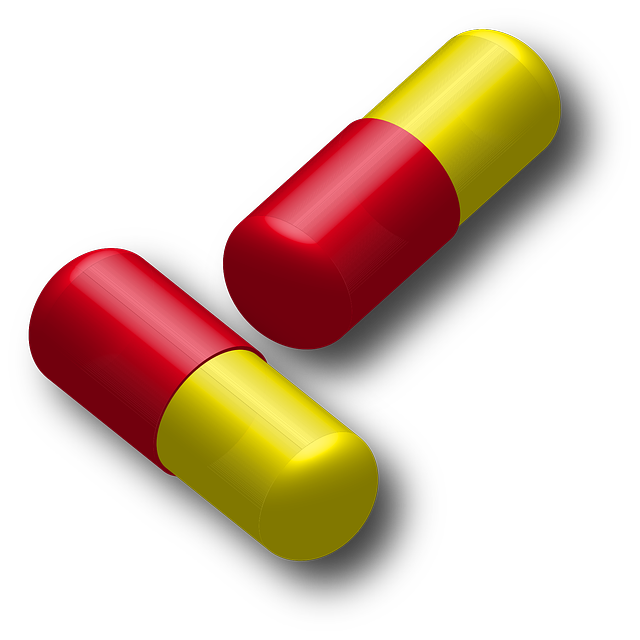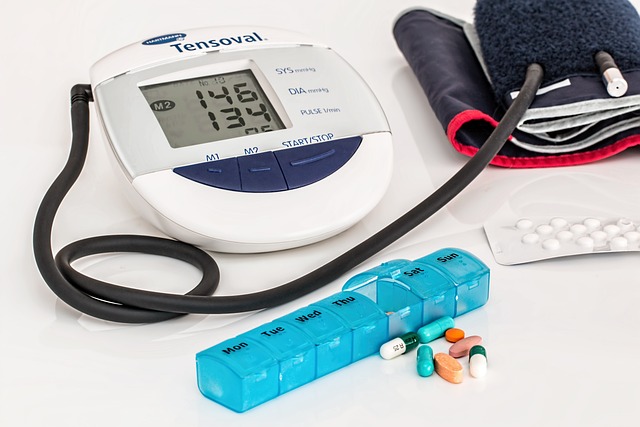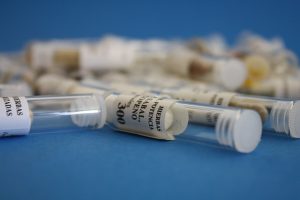Post-Traumatic Stress Disorder (PTSD) is a complex mental health condition triggered by trauma, characterized by flashbacks, emotional distress, avoidance behaviors, and heightened arousal. Diagnosis involves comprehensive assessments by qualified professionals using structured interviews and questionnaires to tailor effective treatments like Cognitive Behavioral Therapy (CBT), Eye Movement Desensitization and Reprocessing (EMDR), Trauma-Focused CBT, and EMDR for children. Group therapy and medication also play significant roles in managing symptoms, with the latter balancing brain neurotransmitters through Selective Serotonin Reuptake Inhibitors (SSRIs). Building a supportive network and practicing self-care are crucial for recovery.
Trauma can leave profound and lasting effects, but healing is possible. This comprehensive guide explores effective PTSD treatment options available to survivors. From understanding the defining symptoms and diagnosis of Post-Traumatic Stress Disorder (PTSD) to delving into specialized therapies like Cognitive Behavioral Therapy (CBT), Eye Movement Desensitization and Reprocessing (EMDR), and Trauma-Focused Dialectical Behavior Therapy (TF-DBT), this article covers a spectrum of evidence-based approaches. Discover the power of group therapy, medication management, and building supportive networks for optimal PTSD treatment and recovery.
Understanding PTSD: Symptoms and Diagnosis

Post-traumatic stress disorder (PTSD) is a mental health condition that can affect individuals who have experienced or witnessed a traumatic event. It’s a complex response to an extremely distressing situation, and understanding its symptoms is crucial for effective PTSD treatment. Common signs include flashbacks or intrusive memories of the trauma, severe emotional distress when reminded of the event, avoidance behaviors (like steering clear of places or people that evoke memories), and heightened arousal, often manifested as irritability, sleep disturbances, and intense anxiety.
Diagnosis involves a comprehensive assessment by a qualified mental health professional who will review symptoms, their severity, and duration to determine if PTSD is present. This can include structured interviews, questionnaires, and other tools designed to pinpoint the specific nature and impact of traumatic experiences. Accurate diagnosis is essential as it enables tailored PTSD treatment strategies aimed at managing symptoms and improving quality of life for survivors.
Common Therapies for Trauma Survivors

Many effective therapies have been developed specifically to help trauma survivors cope with and overcome their experiences. One widely recognized approach is PTSD treatment, which focuses on addressing Post-Traumatic Stress Disorder, a common outcome of traumatic events. Cognitive Behavioral Therapy (CBT) is a key component of PTSD treatment, helping individuals challenge negative thoughts and modify distressing behaviors. Eye Movement Desensitization and Reprocessing (EMDR) therapy has also gained popularity, as it facilitates the processing of traumatic memories while encouraging bilateral stimulation through eye movements or other forms of side-to-side stimulation.
Additionally, trauma-focused therapies like Trauma-Focused Cognitive Behavioral Therapy (TF-CBT) and Eye Movement Desensitization and Reprocessing (EMDR) are tailored to help children and adolescents who have experienced trauma. These therapies empower survivors by teaching them coping skills, ensuring they feel heard and validated, and promoting their overall healing process.
Cognitive Behavioral Therapy (CBT) for PTSD

Cognitive Behavioral Therapy (CBT) is a highly effective approach for treating Post-Traumatic Stress Disorder (PTSD). This therapy focuses on identifying and changing negative thought patterns and behaviors that arise from traumatic experiences. By challenging and modifying these thoughts, CBT helps individuals develop healthier coping mechanisms and reduce the intensity of PTSD symptoms.
One of the key benefits of CBT is its ability to empower survivors to take control of their mental health. Through structured sessions, patients learn to recognize triggers, manage anxiety, and process traumatic memories in a safe environment. This evidence-based method has proven successful in helping many individuals overcome the challenges of PTSD, offering them tools to rebuild their lives and regain a sense of control.
Eye Movement Desensitization and Reprocessing (EMDR)

Eye Movement Desensitization and Reprocessing (EMDR) is a therapy approach that has gained recognition as an effective PTSD treatment. It helps individuals process traumatic memories, reducing their intensity and associated distress. The technique involves guiding patients through side-to-side eye movements while they focus on specific traumatic images or thoughts. This bilateral stimulation, coupled with guided recall of the trauma memory, allows the brain to reprocess the event, potentially lessening its hold on the individual’s psyche.
EMDR therapy offers a unique perspective by acknowledging that traumatic experiences often leave residual effects stored in the brain’s neural networks. Through repeated exposure and cognitive restructuring, EMDR facilitates a shift in how these memories are perceived and responded to, ultimately helping trauma survivors regain control over their lives and emotions. Its non-invasive nature and ability to produce positive outcomes make it a sought-after option for PTSD treatment.
Trauma-Focused Dialectical Behavior Therapy (TF-DBT)

Trauma-Focused Dialectical Behavior Therapy (TF-DBT) is a specialized form of therapy designed to help individuals who have experienced traumatic events, offering an effective PTSD treatment approach. This therapeutic method combines elements from cognitive-behavioral therapy with dialectical behavior therapy, focusing on regulating emotions and improving interpersonal relationships. TF-DBT is particularly beneficial for trauma survivors struggling with complex emotional responses and difficulties in their daily lives.
The therapy aims to help clients develop skills to tolerate distress, regulate emotions, enhance mindfulness, and improve communication. Through individual sessions and group skills training, participants learn to navigate and process traumatic memories while building a sense of safety and stability. This structured approach enables survivors to gain insights into their experiences, understand their emotional reactions, and gradually regain control over their lives post-trauma.
Group Therapy for Trauma Recovery

Group therapy offers a powerful and supportive environment for trauma survivors seeking healing from PTSD. In this setting, individuals connect with others who have experienced similar traumas, fostering a sense of belonging and mutual understanding. Facilitated by a trained therapist, sessions encourage open dialogue, where participants can share their stories, express emotions, and gain valuable insights from one another. This collective approach to therapy not only provides emotional support but also allows for the development of coping strategies tailored to the unique challenges faced by each individual.
Through group interactions, trauma survivors can learn effective ways to manage symptoms like flashbacks, nightmares, and anxiety. They gain new perspectives on their experiences, challenge negative beliefs, and develop healthier ways of processing and expressing emotions. The supportive network within the group also helps individuals feel less isolated, promoting a sense of resilience as they navigate their recovery journey together.
The Role of Medication in PTSD Treatment

Medication plays a significant role in the complex landscape of Post-Traumatic Stress Disorder (PTSD) treatment. Many survivors struggle with symptoms like flashbacks, nightmares, and severe anxiety that significantly impact their daily lives. Selective serotonin reuptake inhibitors (SSRIs) and other pharmacological agents are often prescribed to help regulate these symptoms. These medications work by balancing neurotransmitters in the brain, particularly serotonin, which is crucial for mood and emotional stability.
While not a cure, medication can be a powerful tool in managing PTSD. It aids in reducing the intensity of re-experiencing symptoms, calming anxiety, and improving overall functioning. However, it’s essential to remember that each individual responds differently to treatment, and finding the right medication and dosage often requires careful consideration and close monitoring by a healthcare professional.
Building a Supportive Network for Healing

Building a supportive network is an integral part of the healing process for trauma survivors, especially those dealing with PTSD. This involves surrounding oneself with understanding and compassionate individuals who can offer emotional support, practical help, and encouragement throughout their journey towards recovery. Friends and family members who are willing to listen, educate themselves about trauma and its effects, and respect the survivor’s boundaries can play a significant role in fostering a healing environment.
Support groups led by trained professionals or peer-led communities can also be invaluable resources. These networks provide a safe space for sharing experiences, offering strategies for coping with symptoms of PTSD, and gaining different perspectives on trauma recovery. By connecting with others who have faced similar challenges, survivors can feel less alone in their struggle and develop a sense of belonging, all of which contribute to a more robust and resilient support system for overcoming trauma.
Self-Care Practices for Trauma Survivors

For trauma survivors navigating PTSD treatment, self-care is an indispensable tool for healing. It involves intentional activities that nurture physical, emotional, and mental well-being, helping to regulate stress responses and promote resilience. Engaging in consistent exercise, maintaining a balanced diet, and prioritizing adequate sleep can significantly improve symptoms of PTSD by reducing anxiety and enhancing overall stability. Additionally, practices like mindfulness meditation, deep breathing exercises, or yoga provide effective means to manage flashbacks, nightmares, and heightened arousal.
Beyond physical and mental self-care, trauma survivors benefit from emotional connection and social support. Building a strong support system through therapy groups, trusted friends, or family can foster a sense of belonging and safety. Journaling, art therapy, or creative expression offer alternative avenues for processing emotions and making sense of traumatic experiences. These self-care practices empower trauma survivors to take control of their healing journey, complementing formal PTSD treatment and contributing to long-term recovery.
